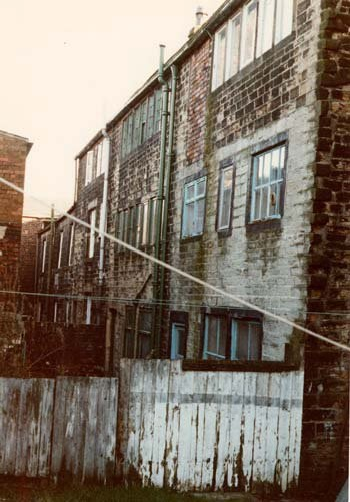

HHSRS VERSION 2
FIRE
Vulnerable group:
Persons aged 60 years or over
Related hazards:
None
Front elevation
Closer view of main windows
HHSRS VERSION 2
SEPTEMBER 2004
Yes
Yes
No
No
Multiple locations
Secondary hazards
Rear elevation
Dwelling: First floor front left bedsit, in a 1900, three storey, terraced HMO.
DESCRIPTION OF HAZARDS
Background: There are six bedsits in the house; 2 to each floor. There is a common combined
bathroom/wc to the first floor and a common kicthen to the ground floor. There is a whb (with h&c) and a
micro-wave cooker to each bedsit. Space heating is by fitted gas fires to each bedsit.
A)
Fire Precautions and Means of Escape: All internal doors are standard panel doors. The
staircase is not enclosed. There are no smoke or heat detectors and no fire alarms. Three fire
extinguishers (water) are provided, one to each floor. The electric wiring appears to have been
adapted, but not to current standards.
LIST OF RELEVANT MATTERS
LIKELIHOOD
OUTCOMES
-
1
-
-
3
3
3
3
-
-
3
3
3
2
-
a
Smoke/heat detectors
3
b
Means of escape
3
c
Combustible furnishings
-
d
Fire fighting equipment
2
e
Lighting protection system
-
# Secondary hazards
-
None
-
Key
3
Seriously defective
2
Defective
1
Not satisfactory
-
Satisfactory/NA
a
Heater/cooker position
b
Space heating
c
Defects to heating
d
Clothes drying facilities
e
Number/siting of sockets
f
Electrical installation
g
Non-fire resistant fabric
h
Smoke permeable fabric
I
Fire stops to cavities
J
Disrepair to fabric
k
Internal doors
l
Self-closers
m
Smoke/heat detectors
n
Fire fighting equipment
o
Lightning protection system
204
Score
Average likelihood, outcomes and HHSRS score for risk of fire for persons aged 60 years
or more in pre-1920 or all flats, 1997-99.
HHSRS VERSION 2
SEPTEMBER 2004
HEALTH AND SAFETY RATING SYSTEM SCORES
Pre 1920 non s.c. Flat
1 in
56
LIKELIHOOD
Low
High
Average:1681
Example
56
2400 1300 750 420 240 130
75
42
24
13
7.5
4
2.5
1.5 >
First floor front dwelling: The condition of the dwelling, the common parts and house
as a whole indicate a significant increase in the likelihood of fire starting either within
this dwelling or in other parts of the house. The lack of precautions and adaptations
mean a fire can spread easily throughout the house wherever it started. Inadequate fire
fighting equipment means there is little chance of limiting a fire.
%
< 4200
Justification
OUTCOMES
Class I
Class II
Class III
21.5
38 >
0.5
Average: 5.6
Example
21.5
< 0.05 0.15 0.3
0.7
1.5
3
7
15
26
Av: 0.0
0.5
< 0.05 0.15 0.3
0.7
1.5
3
7
15
26
Av: 27.7
< 0.05 0.15 0.3
0.7
1.5
3
7
15
26
< 0.05 0.15 0.3
0.7
1.5
3
7
15
26
38 >
46.4
38 >
Av: 66.7
31.6
38 >
46.4
31.6
Class IV
Justification
RATING
The lack of detectors and alarms, and the lack of safe means of escape, substantially
increases the risk of fatal, severe and serious outcomes occuring as a result of a fire.
Example
Average: 39
A B C D E F G H
I
J
4102
Score
RATING SCORES AFTER IMPROVEMENT
IMPROVE
Justification
NEW RATING
Av: Nos
Likelihood to
1 in
560
Outcomes to
10.0 0.0 46.4 43.6 %
Major works are necessary to reduce both the likelhood and the seriousness of the
outcomes. These would include electrical rewiring, installation of fire doors and a
protected means of escape, a fire detector and alarm system and fire fighting
equipment. Even so, as a house in multiple occupation, the fire risk will be higher than
for a single household occupied house.
Improved
Av: 53
A B C D E- F G H
I
J